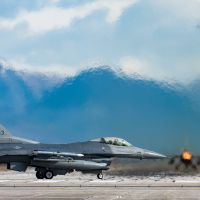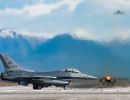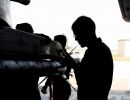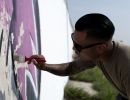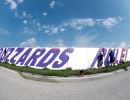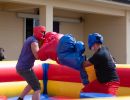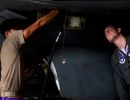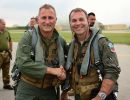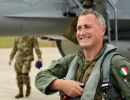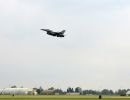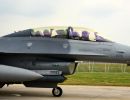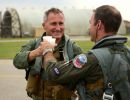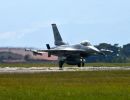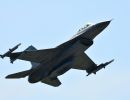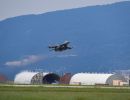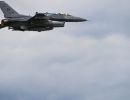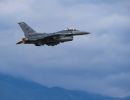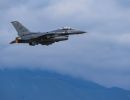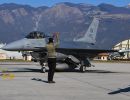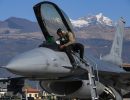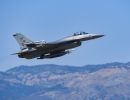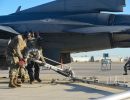
David Sarvai
General Details Typical Combat Pilot's Day
By Jim Garamone
American Forces Press Service
WASHINGTON -- Flying combat in Operation Allied Force is tough, dangerous business, said Air Force Maj. Gen. Charles Wald, vice director for strategic plans and policy with the Joint Staff.
The pilot's lot isn't as simple as hopping into an aircraft and taking off. Every mission means spending hours before and after on maintenance, intelligence and operations briefings and checks.
A Few Words on Leadership
Sharing Success—Owning Failure: Preparing to Command in the Twenty-First Century Air Force.
By Col David L. Goldfein.
The following excerpt is an interview with Col Dave Nichols, USAF; February 2001.
Lt Col Dave “Face” Nichols is among the most positive commanders I’ve worked with. At Aviano AB, Italy, his enthusiasm and love of the 510th Fighter Squadron, the Buzzards, resonated around the wing. He agreed to share a few words on leadership with us.
People make leadership exciting, complex, frustrating, and rewarding. I approach the challenge with a simple acronym—ICE. It stands for intelligence, compassion, energy, and experience. Let me briefly mention each.
Schlemming with the Fulcrum

Pilots of the 510th Fighter Squadron and Germany's Jagdgeschwader 73 train as adversaries but relax as friends. This deployment was the first large-scale encounter with the MiG-29 Fulcrum for the US Air Force.
Operation DELIBERATE FORCE
 The 31st Fighter Wing from Aviano Air Base in Italy led the largest air raids in Europe since World War II in the summer of 1995. Aircraft from the wing and from other coalition forces inflicted heavy damage on key Bosnian Serb targets. During Operation Deliberate Force, as the NATO-led bombing offensive of August and September was called, F-16 pilots of the 31st Wing's 510th and 555th Fighter Squadrons flew as part of large strike packages with US Navy and Marine Corps pilots as well as with British, French, Dutch, German, Italian, and Turkish aircrews.
The 31st Fighter Wing from Aviano Air Base in Italy led the largest air raids in Europe since World War II in the summer of 1995. Aircraft from the wing and from other coalition forces inflicted heavy damage on key Bosnian Serb targets. During Operation Deliberate Force, as the NATO-led bombing offensive of August and September was called, F-16 pilots of the 31st Wing's 510th and 555th Fighter Squadrons flew as part of large strike packages with US Navy and Marine Corps pilots as well as with British, French, Dutch, German, Italian, and Turkish aircrews.
Brig. Gen. Timothy Peppe
 Visitors to the 31st Fighter Wing at Aviano Air Base in Italy are treated to what amounts to an international air show year-round. Ramps and shelters display a wide variety of aircraft from numerous countries, including Britain, Canada, Germany, Italy, and Spain. F-16s reside permanently at the wing's 510th and 555th Fighter Squadrons. USAFE expeditionary forces, consisting of A-10s from Spangdahlem, Germany, and F-15Es from Lakenheath, England, visit Aviano. The wing hosted a group of Portuguese F-16s last December. The US Marines have a contingent of EA-6B radar jamming aircraft at the base. And F-16s visit from Air National Guard and USAF Reserve units in the United States as rotations allow.
Visitors to the 31st Fighter Wing at Aviano Air Base in Italy are treated to what amounts to an international air show year-round. Ramps and shelters display a wide variety of aircraft from numerous countries, including Britain, Canada, Germany, Italy, and Spain. F-16s reside permanently at the wing's 510th and 555th Fighter Squadrons. USAFE expeditionary forces, consisting of A-10s from Spangdahlem, Germany, and F-15Es from Lakenheath, England, visit Aviano. The wing hosted a group of Portuguese F-16s last December. The US Marines have a contingent of EA-6B radar jamming aircraft at the base. And F-16s visit from Air National Guard and USAF Reserve units in the United States as rotations allow.
F-16 AFAC
 Airborne Forward Air Controllers, AFACs as they are called, are usually thought of as spotters in low-flying and slow-moving aircraft. That flight regime seems appropriate for identifying ground targets for other aircraft. The Air Force tried using fast-flying aircraft, the F-100 and F-4 in particular, as airborne controllers for a short time during the Vietnam War. The concept, however, met with limited success. So, the service fell back to relying primarily on such aircraft as the venerable single-engine 0-1 Bird Dog, the twin piston-engine 0-2 Skymaster, and the twin turboprop OV-10 Bronco. Other similar slower aircraft have also been used to a lesser extent over the years. More recently, the close air support A-10 Warthog evolved into the OA-10 to fill the AFAC role for USAF.
Airborne Forward Air Controllers, AFACs as they are called, are usually thought of as spotters in low-flying and slow-moving aircraft. That flight regime seems appropriate for identifying ground targets for other aircraft. The Air Force tried using fast-flying aircraft, the F-100 and F-4 in particular, as airborne controllers for a short time during the Vietnam War. The concept, however, met with limited success. So, the service fell back to relying primarily on such aircraft as the venerable single-engine 0-1 Bird Dog, the twin piston-engine 0-2 Skymaster, and the twin turboprop OV-10 Bronco. Other similar slower aircraft have also been used to a lesser extent over the years. More recently, the close air support A-10 Warthog evolved into the OA-10 to fill the AFAC role for USAF.
Night Vision At Aviano
 If USAF has such a thing as a food chain, F-16s at Aviano are dining near the top. The Block 40 jets at this air base in northern Italy are fully outfitted with LANTIRN navigation and targeting pods. They are the first and only operational F-16s with Sure Strike—a system that receives highly accurate targeting information from the ground. They are also the first F-16s in the active-duty Air Force to employ night vision goggles, or NVGs, operationally. And by march, all of the F-16s of Aviano’s 510th and 555th Fighter Squadrons will have cockpits and external lighting that are fully compatible with NVGs, thanks to a modification called the night vision imaging systems, or NVIS.
If USAF has such a thing as a food chain, F-16s at Aviano are dining near the top. The Block 40 jets at this air base in northern Italy are fully outfitted with LANTIRN navigation and targeting pods. They are the first and only operational F-16s with Sure Strike—a system that receives highly accurate targeting information from the ground. They are also the first F-16s in the active-duty Air Force to employ night vision goggles, or NVGs, operationally. And by march, all of the F-16s of Aviano’s 510th and 555th Fighter Squadrons will have cockpits and external lighting that are fully compatible with NVGs, thanks to a modification called the night vision imaging systems, or NVIS.
Buzzards Go Stateside
 The Buzzards of the 510th Fighter Squadron from Aviano Air Base in northern Italy packed their travel pods and headed west over the Atlantic early this year to take in a few training opportunities in the United States. At Aviano, the Buzzards and the pilots from their sister squadron, the 555th, train with Italian F-104s and coalition forces located nearby, such as Dutch and Belgian F-16s, Canadian and Spanish F/A-18s, German Tornados, and US Navy fighters. Aviano-based F-16s have also participated in NATO Partnership for Peace exercises and in exchanges with Hungarian MiG-29s, Swedish Viggens, and French Mirage 2000s. Stateside training, however, offers many advantages not readily available in Europe, like firing live weapons and participating in large-scale exercises.
The Buzzards of the 510th Fighter Squadron from Aviano Air Base in northern Italy packed their travel pods and headed west over the Atlantic early this year to take in a few training opportunities in the United States. At Aviano, the Buzzards and the pilots from their sister squadron, the 555th, train with Italian F-104s and coalition forces located nearby, such as Dutch and Belgian F-16s, Canadian and Spanish F/A-18s, German Tornados, and US Navy fighters. Aviano-based F-16s have also participated in NATO Partnership for Peace exercises and in exchanges with Hungarian MiG-29s, Swedish Viggens, and French Mirage 2000s. Stateside training, however, offers many advantages not readily available in Europe, like firing live weapons and participating in large-scale exercises.
Operation ALLIED FORCE
 Almost 200 F-16s from seven nations have so far been committed to Operation Allied Force since the attacks on Kosovo and Serbia began on 24 March. F-16s allocated to the operation are flying from eight bases in three countries. The largest contingent of F-16s, about seventy, can be found at Aviano Air Base in northern Italy. In fact, Allied Force has made Aviano home to the largest single Air Force combat wing ever assembled at one base.
Almost 200 F-16s from seven nations have so far been committed to Operation Allied Force since the attacks on Kosovo and Serbia began on 24 March. F-16s allocated to the operation are flying from eight bases in three countries. The largest contingent of F-16s, about seventy, can be found at Aviano Air Base in northern Italy. In fact, Allied Force has made Aviano home to the largest single Air Force combat wing ever assembled at one base.
Operation ALLIED FORCE Debrief

All USAF units at Aviano AB fell under Eberhart's command during Allied Force. "The other services and other countries here did not fall under my command if you follow the wiring diagrams," he says. "But for all practical purposes, the Spanish, Canadians, British, and Portuguese units deployed here during Allied Force became one seamless organization in terms of command and control. We don't treat the international units and differently than we do our USAF units. We have always had a good working relationship with these other countries and with the other services." Eberhart flew fourteen missions in Block 40 F-16s during the conflict. "I worked and flew mostly at night," he says. "I did fly several day sorties because I wanted to get into every mission, during the day and at night, to see the whole picture."

